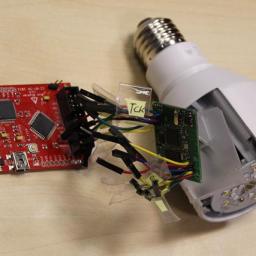
You may be sick and tired of hearing about NSA surveillance, but we may as well get used to it: until legislators decide to put an end to the mass surveillance, they're here to stay. Rather than ignore them then, better to get to know them.
RadioOpenSource has provided an excellent overview of five NSA programs currently in force that you should know by name.
- XKeyscore
- Fascia
- Optic Nerve
- Boundless Informant
- Dishfire
Even the names are evocative of the kinds of things and the sense of authority and accountability that led to their development. An excellent read. While you go through it, see if you can suggest some names for other NSA programs that would operate in the same vein. For example: "Operation Colonoscopy."
Today's Monday poll looks at moderation schemes. No other aspect of a site so determines its "feel" than the user's ability to comment and for those comments to lead to conversation. Get it right and you've got a great discussion on your hands. But get it wrong and the "right" comments lead to group think, the trolls and kooks take it over, or the place becomes a giant flamewar.
I personally think no site has gotten it just right yet. But we began an interesting conversation about it
on this Pipedot article.
There are a lot of models out there, and some of them overlap a bit.
OSNews.com's moderation scheme for example is pretty close to
Slashdot's, although it gives +1 points for funny. A lot of sites running on modified Drupal or Joomla systems don't even deal with moderation: just provide your comment and it goes on the list, though the site admins have a right to nuke anything offensive to corporate powers, and there's no threading. There's also the
Usenet/killfile model, where users decide individuals (not posts) get karma [ed. note: I should've added that to the poll, dang it].
Have your say at the poll to the right. It's a
Borda Count, so give "1" to the system you like best, a "2" to the one you like a bit less, and so on.
Mssrs. Anil Madhavapeddy and David J. Scott over at the Association for Computing Machinery (ACM) ask:
What if all layers in a virtual appliance were compiled within the same safe, high-level language framework? Good question, and I suspect we'll find out soon enough, because the trend in virtualization seems to be leading us in this direction.
While operating-system virtualization is undeniably useful, it adds yet another layer to an already highly layered software stack now including: support for old physical protocols (e.g., disk standards developed in the 1980s, such as IDE); irrelevant optimizations (e.g., disk elevator algorithms on SSD drives); backward-compatible interfaces (e.g., POSIX); user-space processes and threads (in addition to VMs on a hypervisor); and managed-code runtimes (e.g., OCaml, .NET, or Java). All of these layers sit beneath the application code. Are we really doomed to adding new layers of indirection and abstraction every few years, leaving future generations of programmers to become virtual archaeologists as they dig through hundreds of layers of software emulation to debug even the simplest applications?
This project intends to reduce the different layers of software and operating system to simple-API systems that can be installed and used like virtual appliances, perhaps [ed. note: this is my analogy, not the author's] the way
Busybox reduces the POSIX standard to a simpler and smaller binary executable.

It's hard to understate the impact of the silicon chip and the advances wrought by Moore's law and steady research and development in miniaturizing transistors on silicon. But we're getting close to the limits, and getting beyond 9nm puts us at the limits of physics, it would seem. So what's next?
IBM is hoping it will be the first to find out. Not one to shy away from the big bets, IBM is putting $3B into researching the next step, including having a go at 7nm processes, new semiconducting materials like Gallium-Arsenide, and technologies like carbon nanotubes and graphene. At 7nm, the game changes significantly, and quantum physics begins to matter as much as traditional physics.
Steve Torbak points out there's hope for technologies like racetrack memory and neuromorphic memory, too.
Or maybe, there's still room for improvement with what we've got. We're not done with Systems-on-a-Chip, after all, and
DARPA has recently taken this approach to put an entire communications stack on a dime-sized chip.
[Ed. note: All I know is, to watch the
next generation of silly cat videos, we're going to need a serious boost in hardware. /grin]
When Bryan said he was going to focus on coding the site, I thought to myself, "well maybe that's the end of this: it will turn into a software project and nothing more." Then I went back to the other well-known News-for-X sites and had a look around. It's a Goldilocks and the Three Bears story: one has a semi-decent news and a large community but an awful interface. Another has an awful interface and a medium-sized community, crappy news, and no editing. There's Reddit too, and although everyone says the gold is in the sub-reddits, I found few sub-reddits that were really chock-full of awesome comments and something about Reddit lends itself to the quick repartee and stupid puns instead of real conversation.
So I'm going to throw my weight behind Pipedot. It's got a great interface that works well on every screen I use, and huge potential. All we need are some more contributors. Give me a hand getting the word out. Here's how you can help.
Got a lot of time? We could certainly use another editor.
This place will only be as good as its submitted articles. You know what to do.
Got a good idea for a poll? Post it here or submit it to the list: list@pipedot.org
Otherwise, help get the word out! Link Pipedot articles to other places you read news: ArsTechnica, the Register, OSNews, Usenet, the millions of Android sites, the Verge, and so on. If you're not into those things, how about emailing your friends with a link to Pipedot. We could use more voices around here. Spread links on IRC if that's your thing.
There's an RSS feed. But Pipedot articles are getting distributed by Twitter now too. Follow @Pipedot and retweet as far and wide as you can. The Twittersphere is (inexplicably) a great echo chamber for linking to Pipedot articles and getting the word out. I'm also thinking about paying to have an advert or two placed in some strategic places. Got any suggestions for the best placement of these adverts? Let me know.
Hoping to see this place turn into something awesome.

I got the idea when writing up
that article about Distrowatch: they cover so many distros and so many of them are so obscure; I decided to check some of them out. Conveniently - as though they're tempting me - there's a "Random Distribution" button on the front page of Distrowatch, which makes it easy. Every Friday I propose a roll of the dice, and a quick look at some distro you've probably never heard of. I'll try to give equal coverage to the BSDs too.
If this is annoying or not interesting to you, quick! Flame me to a cinder in the comments. Otherwise, enjoy what will hopefully be a weekly feature that will lead to interesting commentary and comparison. I'll be skipping the big guys (RedHat, openSUSE, Ubuntu, etc.) since the purpose is to give some exposure to the obscure/niche stuff. These aren't reviews since I don't have time to install and try each one.
Today's distro is GALPon MiniNo, which gets my vote for the "least memorable name for a distro, ever." But it can be explained: GALPon is the
Linux User's Group of Pontevedra, Spain, in the region of Galicia. And they're actively working to get Linux in schools, especially where equipment is old or low-powered and often recycled. No surprise then that GALPon MiniNo emphasizes low system requirements: it installs on machines with 128M of RAM and 4GB hard drives, and uses IceWM or Openbox, RoxFiler, and the like to stay light. It also supports Galician and Catalan - regional languages of Spain - out of the box. Looks like it will install nicely on a netbook or liveCD.
I'm a big fan of lightweight distros to counter the otherwise endless bloat of the big guns. I might have to try this one out and give Puppy a run for its money. Read more (in Spanish) at
their homepage,
their help and documentation (also Spanish/Galician), or
their Google group forum.

Manufacturers and the easily-excited tech media are more excited than ever to push us into the world of the "Internet of Things," in which common appliances can all communicate with us over (presumably) TCP/IP. I have yet to see why this is useful for anyone other than appliance manufacturers, who will have a reason to sell us new versions of everything we already own.
But here's another reason to be suspect:
the folks building out the latest smart devices seem to have avoided learning any lessons from the security flaws we have been working out of the last wave of devices (computers, phones, routers). This article asks, "How many security researchers does it take to hack a [smart] lightbulb?" and concludes: not very many at all.
Routers are an obvious target for hackers as they are intrinsically linked to the Internet making it possible for hackers to compromise them from a distance, but less attention has been given to some of the other network-enabled devices cropping up in people's homes. Once a hacker has access to a person's home network they have access to any device connected to it, and with an increasingly diverse suite of devices coming online the potential to break down the barrier between the cyber and the physical worlds is getting ever greater.
To demonstrate the concept, Context's senior managers bought a case of beer and five network-enabled consumer devices from a mixture of start-ups and established vendors, configured them with the recommended security settings, set up a secure wi-fi network and set their best and brightest cyber-security researchers to the task of hacking this mock smart home.
Don't feel bad though that the new Internet of Things has been delivered pre-rooted.
Your new Android Wear watch just got rooted too. Hopefully they'll invent "smart underwear" too so that can get rooted upon arrival: then we'll
really be vulnerable.
[Ed. note: Kudos to this research team, by the way, for ensuring their study was accompanied by a case of beer - an important part of any tech research, in my opinion.]

Sports bring about advances in technology too, although less frequently and all too often, chemically. But after watching the last couple of matches of FIFA World Cup 2014, I thought I'd look into what new technologies were being used or had been put into usage in order to present the World Cup.
Here are five bits of technology being used in this cup, but be warned, one of them is the frikkin' "Twitter Wall," which I'm not sure counts as innovation.
Stick around though. In another 35 years,
if these guys' prediction is correct, we'll have FIFA robots playing their own World Cup, and we can bet our money on which robotic team will win it. Hopefully by that time we'll all be getting back and forth to work on an advanced version of these
rocket skates too, if only to ensure we can still outrun the robots.

If the tech market experienced a bit of a downturn not long ago, it would now seem it's on the rebound, and investors are looking for the next dot-com miracle. The proof? Stocks like this one.
Check out the CYNK stock, linked to a company called Introbiz.
Registered in Belize, chartered in Nevada, one employee, totally opaque financial statements. Zero revenue, $1.5M in operating losses. No assets. And yet,
the stock is up 25,000% from $0.10 to $14 per share in the last 16 days.What does the site do? Looks like an ersatz social networking firm with a vague charter of connecting you to famous people. No idea how, who, or where. This is a bubble at its finest, and you know what they say about a fool and his money ...

Not sure what happened, and Distrowatch king Ladislav Bodnar isn't saying, but a couple of days ago, Distrowatch.com went off line. A day or two later it was back, but as distrowatch.org.
Ladislav writes:As many of you noticed, the distrowatch.com domain name was suspended by the domain's registrar, Doteasy, last Sunday. I don't want to go into details about what exactly happened as it's a long and boring story. Suffice to say that I feel grossly aggrieved by the series of greedy and even malicious actions taken by Doteasy and as soon as I get this sorted out, I will be looking into transferring the distrowatch.com domain name to another registrar. If any of you have a recommendation for a good registrar (preferably with customer support personnel that is competent), please let me know in the comments section below or send me an email.
Glad to see it was just bureaucracy, and not Distrowatch going off line. I love that site and visit it on a pretty regular basis, even though I'm pretty loyal to just two or three distros and almost never try out those exotic, little-known ones.
 You may be sick and tired of hearing about NSA surveillance, but we may as well get used to it: until legislators decide to put an end to the mass surveillance, they're here to stay. Rather than ignore them then, better to get to know them. RadioOpenSource has provided an excellent overview of five NSA programs currently in force that you should know by name.
You may be sick and tired of hearing about NSA surveillance, but we may as well get used to it: until legislators decide to put an end to the mass surveillance, they're here to stay. Rather than ignore them then, better to get to know them. RadioOpenSource has provided an excellent overview of five NSA programs currently in force that you should know by name.




